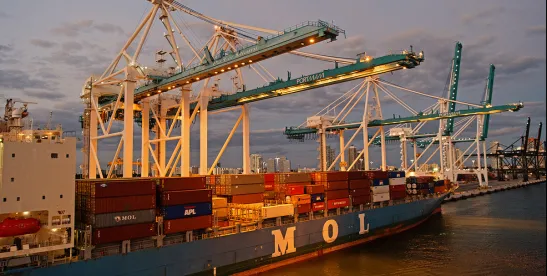As exploration for energy moved offshore, the United States exercised sovereign authority establishing the applicable laws and regulations over these unique and complexed operations where situs and status are often determinative of rights and remedies.
Jurisdiction matters. It can affect whether state, federal, or maritime law applies and the forum where litigation can proceed. In the offshore context, the jurisdictional factual questions include determining situs and nexus. Where did the dispute arise and on what type of facility?
Situs: The United States claims sovereignty over an “Exclusive Economic Zone” (EEZ) that extends between 200 nautical miles. “Territorial waters” is the term used to describe the jurisdictional authority over state waters, the continental shelf, and economic zones. In 1953, the Submerged Lands Act extended state jurisdiction over submerged lands extending up to 3 nautical miles of the adjacent state’s shoreline. At the same time, Congress passed the Outer Continental Shelf Lands Act (OCSLA),extending the US Constitution, laws, and jurisdiction over the continental shelf beyond 3 nautical miles. Thus, federal law and jurisdiction extend to OCSLA operations. Federal agencies overseeing OCSLA operators include the Bureau of Ocean Energy Management, the US Coast Guard and the Occupational Safety and Health Administration. Their work and authority are often subject to Memorandum of Understanding between various agencies.
Maritime law can apply when the primary focus of an offshore dispute involves a vessel and has a significant relationship to a traditional maritime activity. Contracts involving vessels and platform structures may be hybrid in that either maritime or common law applies or both.
Nexus: Everything that floats on the Outer Continental Shelf (OCS) may not be a vessel subject to maritime law, and every worker injured on a vessel may not be a seaman.
First, fixed structures located on state waters are subject to the laws of the state. Platforms located on the OCS adopt the law of the adjacent state as surrogate federal law where no conflict exists under OCSLA. Two cases in the US Court of Appeals for the Fifth Circuit involving offshore energy illustrate the complex analysis involved in the maritime versus non-maritime application.
Whether or not an offshore worker should be covered by workers’ compensation, or the Jones Act was addressed in Sanchez v. Smart Fabricators,where a welder was injured on a jack-up drilling vessel. The court denied seaman status even though the situs of the work was on a vessel because the welder did not have a substantial connection to a vessel in navigation.
The Fifth Circuit in In re Larry Doiron Inc. offered a two-tiered test to determine whether an offshore contract involving vessels and platforms is interpreted under state or maritime law. The first question is, does the contract relate to the development of offshore energy involving platforms and vessels? If so, do the parties expect that a vessel will play a “substantial role” in completing the contractual services? Whether state law or maritime law applies is important because it may significantly impact the insurance and indemnity obligations.
A more recent example of the complexity and effect of situs and status on the applicable law is Earnest v. Palfinger Marine USA (5th Cir. 2024). In Palfinger, the simple question was whether a contract to inspect and repair lifeboats affixed to a tension leg platform (TLP) located on the OCS was a maritime contract. Factually, after the lifeboats were inspected and repaired by Palfinger Marine on a Shell TLP, a corroded lifting cable failed during a drill, causing a lifeboat to fall from the platform into the Gulf of Mexico and cause injury and death. Contractual indemnities and choice of law provisions in the master service contract would be void if state law applied but enforceable if maritime law applied. The Fifth Circuit addressed the many complex issues involved and held that the TLP was not a vessel, that the platform lifeboats were vessels (following Lozman v. City of Riviera), that OCSLA provided federal question jurisdiction, and that, under a Doiron analysis, the focus of the repair and maintenance contract involving a lifeboat, whether affixed or not, was maritime even if the lifeboat was not engaged in maritime commerce. This is because a contract to repair a vessel is maritime in nature. The Palfinger decision provides a prime example of the unique nature of offshore operations, where situs and status are intertwined to determine both jurisdiction and applicable law.
This article on offshore jurisdiction is a cursory introduction to the complexities of offshore legal issues where there are concurrent jurisdiction, overlapping regulatory authorities, and choice of law issues involving maritime, state, and federal laws and regulations. The articles following this introduction will highlight issues often encountered in the maritime and offshore industry sectors.





 />i
/>i

